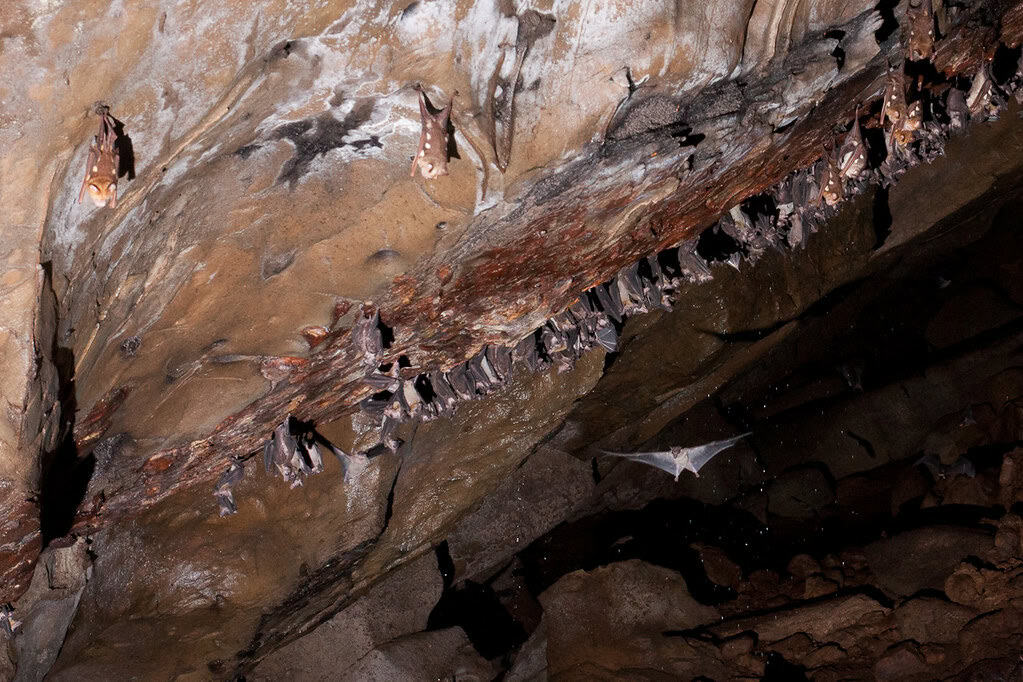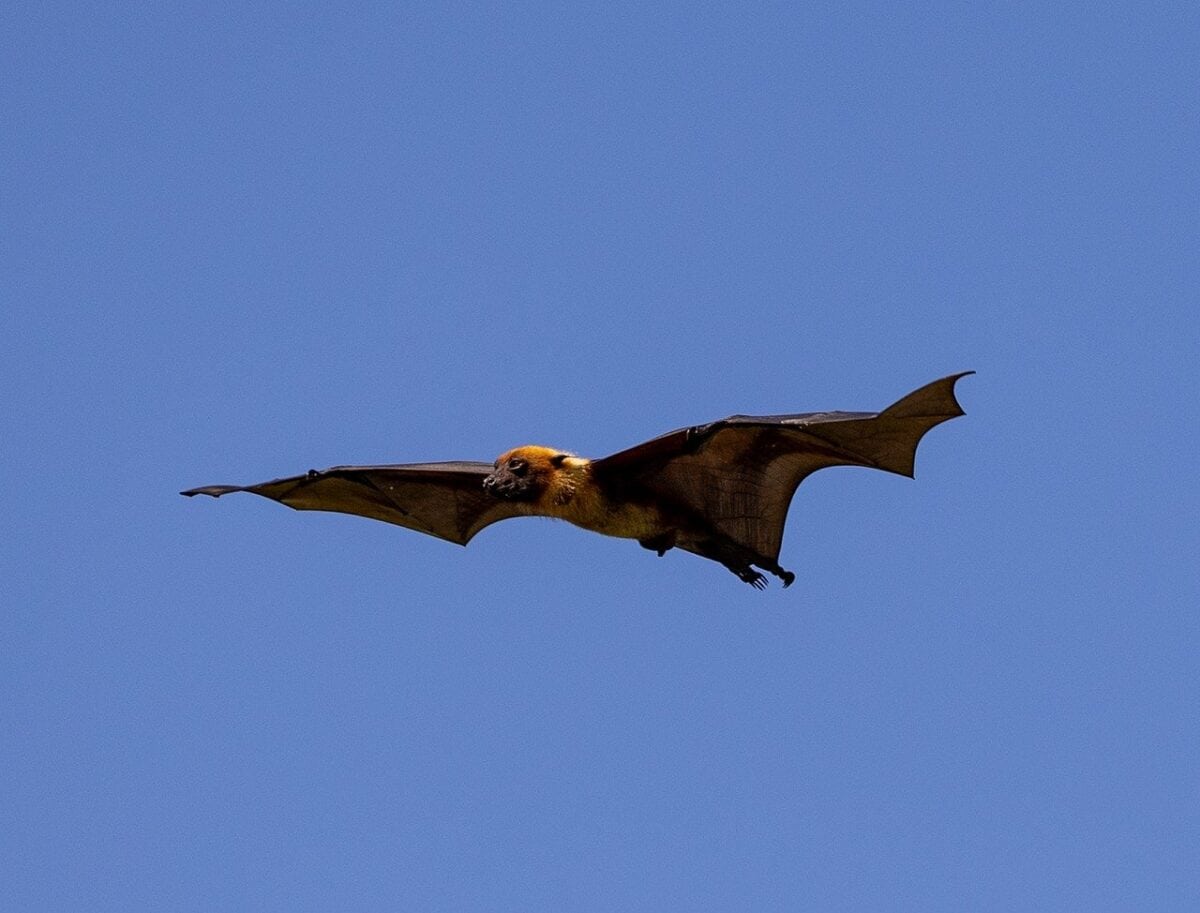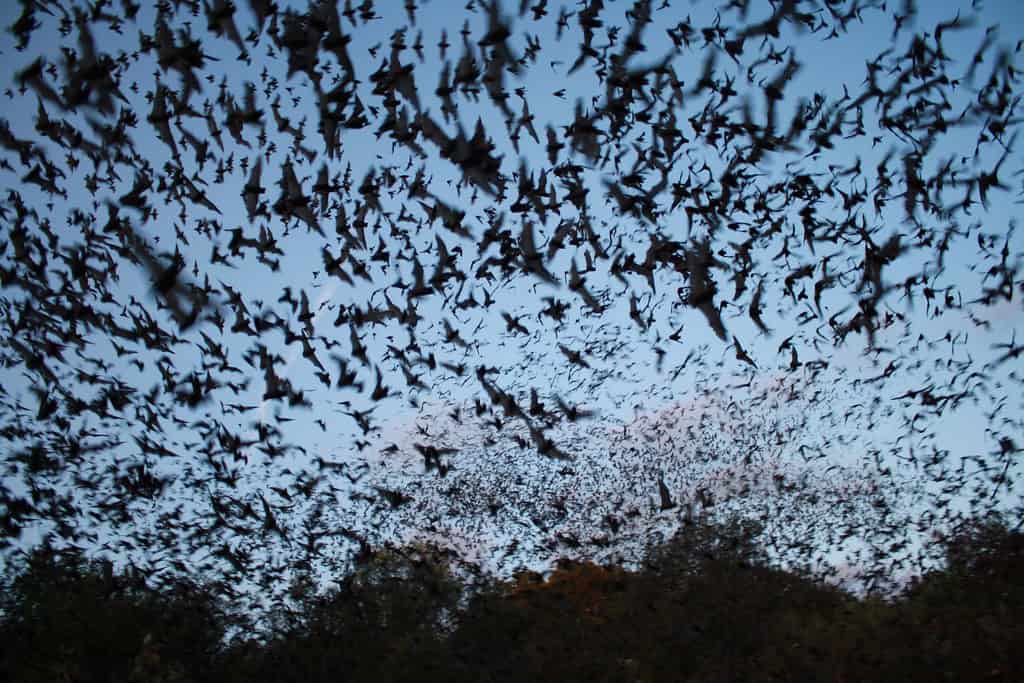Deep in the caves and hollow trees of Latin America lives a creature that has transcended its fearsome reputation to become one of nature’s most fascinating social pioneers. Vampire bats, far from being simple bloodthirsty monsters of folklore, have evolved some of the most complex social relationships found in the mammalian world.
These small, nocturnal creatures have developed extraordinary cooperative behaviors that rival those of primates and cetaceans, including food sharing, mutual grooming, and long-term social bonds that can last for years. But how did these specialized mammals develop such remarkable social structures? The journey from solitary hunter to cooperative community member offers profound insights into how extreme environmental pressures can drive the evolution of altruism and cooperation.
The Evolutionary Origins of Vampire Bats

Vampire bats (family Phyllostomidae, subfamily Desmodontinae) emerged relatively recently in evolutionary terms, diverging from fruit-eating bats approximately 26 million years ago during the Late Oligocene epoch. The three extant species—the common vampire bat (Desmodus rotundus), the hairy-legged vampire bat (Diphylla ecaudata), and the white-winged vampire bat (Diaemus youngi)—are the only mammals that subsist entirely on blood, a dietary specialization known as hematophagy.
This extreme dietary adaptation set vampire bats on a unique evolutionary trajectory that would ultimately shape their social behaviors. Unlike their fruit-eating ancestors who could feed in groups at abundant food sources, vampire bats faced the challenge of finding and accessing blood meals from often-alert mammalian or avian hosts—a challenge that would eventually drive the evolution of their remarkable social systems.
The Precarious Blood Diet

The transition to a blood-only diet created extraordinary survival challenges that laid the groundwork for vampire bats’ social evolution. Blood is a nutritionally unusual food source—high in protein and iron but low in carbohydrates, fats, and other essential nutrients. More critically, it’s a precarious resource. Vampire bats have an exceptionally high metabolism and can starve to death after just 60-70 hours without feeding.
Yet feeding success is inconsistent; on any given night, approximately 30-40% of vampire bats fail to find food. This created a life-or-death evolutionary pressure that favored individuals who could develop feeding cooperation mechanisms. Unlike fruit or insect-eating bats that could reliably find abundant food sources, vampire bats faced a stark reality: develop social feeding strategies or face frequent starvation. This extreme selection pressure became the catalyst for their remarkable social adaptations.
Blood Sharing: The Foundation of Vampire Bat Sociality

The most extraordinary social behavior in vampire bats—and the cornerstone of their complex social system—is their food-sharing behavior. When successful foragers return to their roost, they often regurgitate blood meals to feed colony members who failed to find food that night. This behavior, first documented in detail by biologist Gerald Wilkinson in the 1980s, represents one of the clearest examples of reciprocal altruism in the animal kingdom.
Through careful observation and experimental studies, researchers have determined that this is not simply indiscriminate sharing but involves sophisticated social accounting. Bats preferentially share with individuals who have shared with them in the past and with close relatives. This “blood for blood” reciprocity system creates a social safety net that dramatically increases survival rates in colonies. A bat that fails to feed for three consecutive nights faces almost certain death, but the sharing system ensures that most colony members survive these temporary feeding failures, demonstrating how the extreme constraints of their diet directly shaped their social evolution.
The Neurobiology of Bat Social Bonds

The physiological and neurobiological mechanisms that enable vampire bat sociality are as remarkable as the behaviors themselves. Recent research has revealed that vampire bats show increased levels of oxytocin—often called the “bonding hormone”—during food sharing and social grooming interactions. This neurochemical response parallels what’s seen in highly social primates, suggesting a case of convergent evolution in the neurological pathways that support social bonding.
Additionally, vampire bats have developed specialized neural circuitry that appears to help them recognize and remember individual roostmates, allowing them to maintain complex social networks with dozens of individuals. Brain imaging studies have shown enlarged regions associated with social memory in vampire bats compared to less social bat species. These neurobiological adaptations didn’t develop in isolation but co-evolved with their social behaviors, creating a sophisticated system for maintaining the complex social accounting necessary for their reciprocal food sharing networks to function effectively.
Mother-Offspring Relationships: The Social Foundation

The intensive parental care system of vampire bats represents the evolutionary foundation upon which their broader social systems developed. Female vampire bats form exceptionally strong bonds with their offspring, nursing them for up to 9-10 months—a remarkably long period compared to other bats. Even more unusually, mothers continue to share blood with their offspring beyond weaning, sometimes for years. This extended dependency period serves as a “training ground” for social behaviors that will later extend to non-relatives.
Young bats learn the mechanics of food sharing and the social rules that govern reciprocity during this extended period with their mothers. Research by Gerald Wilkinson and colleagues has shown that young bats observe and learn from these maternal interactions, developing the social skills necessary for their cooperative adult lives. This extended period of maternal investment and teaching represents a critical evolutionary step that allowed vampire bats to develop the cognitive and behavioral framework for their broader social system.
From Family Bonds to Friend Networks

The remarkable transition from kin-based sharing to non-kin cooperation represents one of the most significant steps in vampire bat social evolution. While many animals share food with close relatives—a behavior explained by kin selection theory—vampire bats have extended this behavior to non-relatives in a systematic way that resembles human friendships. Long-term studies tracking individual bats have demonstrated that they form strong, stable bonds with unrelated roostmates through a gradual process of mutual grooming and small food-sharing interactions that build trust over time.
These relationships often endure for years, with pairs of “friends” preferentially roosting together and maintaining consistent sharing partnerships. When researchers experimentally transferred bats between colonies, these social bonds persisted even when the bats were separated for extended periods, demonstrating the depth and resilience of these social connections. This expansion beyond kin selection to reciprocal altruism represents a rare evolutionary development that parallels human social structures more closely than those of most other mammals.
The Cooperative Roost: Collective Benefits

The vampire bat colony structure provides collective advantages that extend beyond feeding reciprocity. Their roosts, often located in caves, hollow trees, or abandoned buildings, become complex social hubs where multiple forms of cooperation occur simultaneously. Communal roosting provides thermoregulation benefits, as huddling together helps bats maintain optimal body temperature while conserving energy. Female bats engage in communal care behaviors, sometimes nursing non-offspring when mothers are absent—a rare behavior among mammals.
The colony also serves as an information exchange center; research has shown that successful foragers may inadvertently provide clues about productive feeding locations through scent cues, allowing other colony members to target promising areas. Additionally, the colony provides protection through collective vigilance against predators. These multiple layers of cooperation create a positive feedback loop where the benefits of sociality continue to accumulate and reinforce social tendencies, driving further evolutionary development of their cooperative traits.
Social Cognition and Intelligence

The cognitive abilities that enable vampire bat social systems are impressively sophisticated. These bats possess exceptional social memory, with individuals able to recognize and remember dozens of individual roostmates and their interaction histories. Experimental studies have demonstrated that vampire bats can track and remember food sharing events that occurred weeks or even months earlier, allowing them to maintain their reciprocal relationships over time. They also show evidence of third-party understanding, where bats appear to observe and learn from interactions between other colony members. The level of cognitive processing required for these behaviors has driven the evolution of enhanced social intelligence in vampire bats, with brain regions associated with social memory and decision-making showing expansion compared to solitary bat species. This cognitive development represents a classic case of co-evolution, where the demands of complex social living selected for enhanced cognition, which in turn enabled more sophisticated social structures to develop.
Vocal Communication and Social Recognition

Vampire bats have developed sophisticated vocal communication systems that support their social complexity. Unlike many bat species that primarily use echolocation calls, vampire bats employ a diverse repertoire of social vocalizations that facilitate individual recognition and relationship maintenance. Each bat produces distinctive contact calls that serve as acoustic “signatures,” allowing individuals to identify specific roostmates even in complete darkness. Mother-offspring pairs develop unique call patterns that strengthen their bonds, and research has shown that vampire bats can recognize individual roostmates by their calls alone, even after long periods of separation.
This vocal recognition system is crucial for maintaining their complex social networks and enables the targeted reciprocity that characterizes their food sharing. Recent research has revealed that these social calls contain sufficient information for bats to potentially assess the age, sex, and identity of callers, providing important social information that helps structure their cooperative communities.
Testing the Bonds: Experimental Confirmation

The strength and nature of vampire bat social bonds have been verified through ingenious experimental studies that demonstrate the remarkable resilience of their relationships. In landmark research, scientists temporarily removed individual bats from their colonies and restricted their feeding, then returned them to observe which colony members would share food with the hungry returnees. The results consistently showed that sharing followed clear patterns of past reciprocity—bats that had previously shared with the test subject were most likely to donate blood, even when not closely related.
In another striking experiment, researchers introduced the scent of a predator to test bats and found that “friends” would approach to groom and comfort the stressed individual more quickly than other colony members would. Perhaps most tellingly, when colonies were experimentally divided and later reunited after months of separation, bats quickly reestablished their previous sharing relationships, demonstrating the long-term memory and stability of their social bonds. These experimental findings confirm that vampire bat sociality represents true reciprocal altruism rather than simple kin selection or coincidental cooperation.
Evolving in the Human Shadow

The relationship between vampire bat social evolution and human activity presents a fascinating intersection of natural and anthropogenic factors. The common vampire bat (Desmodus rotundus) has experienced a population boom following European colonization of the Americas, as livestock introduced by settlers provided abundant, predictable food sources. This relatively recent abundance may have actually enhanced their social behaviors rather than diminishing them, as stable colonies with consistent membership allowed long-term relationships to develop and strengthen.
However, the human relationship with vampire bats remains complex and often antagonistic due to their role in spreading rabies to livestock. Culling efforts have inadvertently created selection pressures that may favor more socially connected bats, as those with extensive sharing networks are more likely to survive periods of food scarcity that follow population control measures. This dynamic illustrates how even human interventions have become part of the selective environment shaping vampire bat sociality, demonstrating the remarkable adaptability of their social systems in response to changing conditions.
Comparison with Other Social Mammals

When compared with other highly social mammals, vampire bats demonstrate distinct features that make their social evolution particularly remarkable. Unlike many social primates, wolves, or elephants, vampire bats evolved sociality without the benefit of large brains or extended lifespans. While a chimpanzee might live 50 years and have ample time to develop and maintain complex social networks, vampire bats typically live only 10-20 years in the wild and have far smaller brain capacity. Yet they’ve evolved social recognition, reciprocity tracking, and relationship maintenance systems that rival those of much larger-brained species.
Their food-sharing system is also unusually direct compared to other cooperative mammals; while meerkats or wolves might cooperatively hunt, vampire bats actually transfer food from one individual to another—a rare behavior outside of parent-offspring relationships. Perhaps most significantly, vampire bat sociality emerged from extreme ecological pressure rather than from the predator defense or territorial advantages that drove sociality in many other mammals, demonstrating an alternative evolutionary pathway to complex cooperation that enriches our understanding of how social systems evolve.
The Continuing Evolution of Bat Sociality

The social evolution of vampire bats represents not a finished product but an ongoing process that continues to respond to changing environmental pressures. Climate change and habitat disruption are creating new challenges that may further shape their social adaptations. As traditional prey animals shift their ranges or decline in number, vampire bats face changing feeding opportunities that may strengthen their reliance on social networks to buffer feeding inconsistency. Recent research indicates that vampire bat colonies in more disturbed habitats show more extensive food sharing networks than those in stable environments, suggesting that environmental stress may actually intensify their cooperative behaviors.
Additionally, ongoing research using new tracking technologies has revealed that vampire bats maintain more extensive social networks than previously recognized, with individuals sometimes traveling several kilometers to maintain relationships with bats from neighboring colonies. These emerging findings suggest that vampire bat sociality is not only continuing to evolve but may be developing more complex inter-colony dimensions that parallel the complexity of human social networks. As their environment continues to change—largely due to human activity—vampire bat social systems provide a remarkable natural laboratory for understanding how cooperation evolves under pressure, offering insights that extend far beyond these remarkable mammals.
Conclusion

The evolutionary journey of vampire bats from solitary hunters to social cooperators stands as one of the most compelling examples of how extreme environmental challenges can drive the development of sophisticated social behaviors. Through the precarious nature of their blood-only diet and the constant threat of starvation, these remarkable mammals developed cooperation strategies that transformed their survival prospects and created one of the animal kingdom’s most distinctive social systems. The food-sharing behaviors, long-term bonds, and cognitive adaptations that enable vampire bat sociality offer profound insights into the evolution of cooperation beyond kinship—a rare development that parallels aspects of human social structures.
As we continue to study these extraordinary mammals, their social lives remind us that cooperation can emerge from unlikely sources, and that the pressures that initially appear most challenging can sometimes drive the most innovative evolutionary solutions. In the darkness of Latin American caves, vampire bats have quietly built communities based on reciprocity and trust, demonstrating that even among nature’s most specialized predators, sharing and cooperation can become the ultimate survival strategy.
- How Vampire Bats Became the Most Social of Mammals - August 11, 2025
- Venomous Snakes You’re Likely to Encounter in Arizona’s National Parks - August 11, 2025
- This Fish Can Climb Waterfalls—Yes, You Read That Right - August 11, 2025

